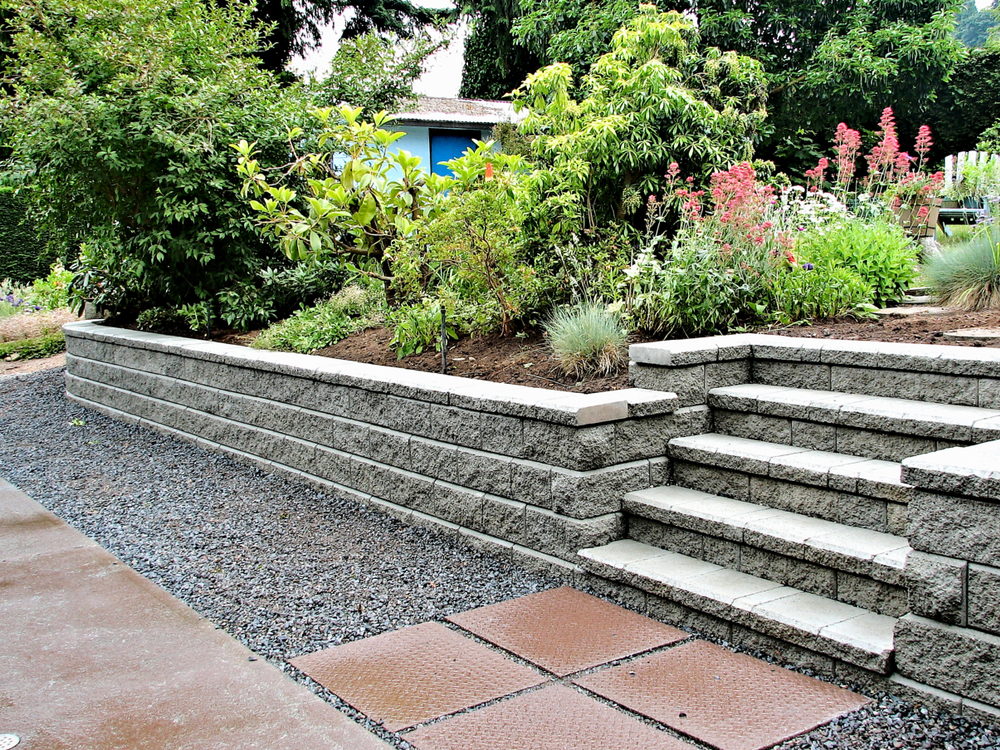
How Retaining Walls Help with Landscaping Looks and Function
Several elements of a given landscape can provide immense value for both aesthetics and functionality, and retaining walls are a great example. What are some retaining wall advantages for both of these areas?
At Wright Landscaping, we’re here to offer the best expert commercial landscaping services around Spanish Fork, Salem, Mapleton, Eagle Mountain, and even up to Layton. Here are some retaining wall advantages to consider for both aesthetics and practical functionality around your landscape.
Preventing Soil Erosion
One of the main purposes of retaining walls is to prevent soil erosion. They act as a barrier that holds back soil from sliding down slopes or hills, especially in areas with steep terrain. Retaining walls are designed to withstand the pressure and weight of the soil behind them, preventing any potential damage or collapse.
This can be especially beneficial for properties located near bodies of water, where soil erosion can occur due to heavy rains or strong winds. By preventing soil erosion, retaining walls help maintain the stability and integrity of your landscape.
Slope Management
One related benefit of retaining walls in landscaping is their ability to help manage slopes. In areas with steep inclines, retaining walls can be used to create multiple levels of flat surfaces, making it easier to maintain and access the different parts of your landscape.
Retaining walls also help prevent soil erosion on sloped properties by providing a barrier that holds back the soil and prevents it from sliding down the slope. This is particularly useful in areas prone to heavy rainfall or strong winds.
Creating Usable Flat Spaces
Because retaining walls can help create multiple levels of flat surfaces, they are often used to transform a sloped landscape into usable and functional spaces. This allows you to make the most out of your property and utilize all areas for various purposes, such as seating areas, gardens, or even outdoor kitchens.
Retaining walls come in different materials, such as concrete blocks, natural stone, or brick, giving you the flexibility to choose the design that best fits your desired aesthetic for your outdoor space.
Improving Drainage
In addition to managing slopes and creating usable spaces, retaining walls can also play a crucial role in improving drainage on your property. By redirecting water flow away from your home’s foundation and other important structures, retaining walls can help prevent erosion, flooding, and potential damage to your property.
Furthermore, retaining walls with built-in drainage systems or weep holes can help alleviate water pressure against the wall, preventing any potential damage or collapse. This is especially important for properties in areas with heavy rainfall or prone to flooding.
Creating Privacy
Retaining walls can also serve as a natural privacy barrier for your outdoor space. By creating different levels on your property, you can strategically place retaining walls to block unwanted views from neighboring properties or busy roads. You can also add additional features, such as tall hedges or plants behind the retaining wall for added privacy.
Enhancing Overall Design Structure
From a structural standpoint, retaining walls play a crucial role in keeping your property stable and safe. However, they can also enhance the overall design of your outdoor space.
Retaining walls come in various materials and designs, allowing you to choose one that complements or contrasts with the look of your landscape. Whether you prefer a modern concrete wall or a rustic stone retaining wall, it can add visual interest and depth to your yard.
Can Be Built Using Decorative Materials
If you’re envisioning a retaining wall that’s mostly or only for aesthetic purposes, then you can get creative with the materials used. Instead of using plain concrete or stone, consider incorporating decorative elements into the design.
For example, you could use colorful tiles to create a mosaic pattern on a concrete retaining wall. Or you could choose to incorporate different types of stones with varying textures and hues for a more natural and visually appealing look.
Retaining walls can also be built using reclaimed materials such as old bricks or railroad ties, adding a unique touch to your outdoor space while also repurposing materials that would otherwise go to waste.
As you can see, there are numerous retaining wall advantages that make them beneficial for both aesthetics and function in your landscape. For more information here, or to learn about any of our expert commercial landscaping services around Spanish Fork, Salem, Mapleton, Eagle Mountain, and even up to Layton, contact our team at Wright Landscaping today!
RELATED POSTS

How Long Do Concrete Patios Last? Key Factors

Which Sprinklers Are Best for Your Landscape Setup?
